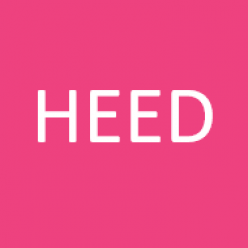- Home Economics provides a favorable context to learn the skills needed in an increasingly diverse world.
- Home Economics teachers need both theoretical and practical tools that help them to better understand the ongoing changes in society and to work with diverse learners.
- Teachers’ role is crucial in building culturally responsive learning space. Teachers’ critical thinking shows in creativity, future oriented thinking, wisdom and personal strength. (4)
- Cultural sustainability in home economics teaching can be viewed through seven elements: 1) an international dimension, 2) to maintain traditions and inter-generational interaction, 3) to be seen as local, 4) promoting art and creativity, 5) having a religious and spiritual element 6) as well as promoting multiculturalism or 7) focusing on build and natural environment. (6)
- Cultural plunges – brief exposures to difference – can provide
stimulating and meaningful experiences that can be used for reflection in class. (11,12) - Girls’ scored higher in each of the home economics content area and succeeded better both in written as well as in practical assessment at the National Home Economics learning assessment (2015). (15,16)
- The study of gender roles in home economics textbook illustrations shows how agency is portrayed through a heteronormative conception of gender. The authors critique the lack of diversity found in performing gender and they warn that the gender equality traditionally attached to compulsory home economics education may not be realized. (1)
- Involving ”target groups” of educational development as subjects into educational development promotes ownership of educational development and brings deeper cultural and societal knowledge into development process. (9,10)

The numbers in bold refer to references on literature list
LITERATURE:
- Anttila, S., Leskinen, J., Posti-Ahokas, H., & Janhonen-Abruquah, H. (2015). Performing gender and agency in Home Economics text book images. In Diversities and Interculturality in Textbooks: Finland as an Example. Cambridge Scholars Publishing.
- Janhonen-Abruquah, H., Heino, L. Tammisuo, S. & Posti-Ahokas, H. 2017. Adapting to change – building learning space in a culturally responsive manner. International Journal of Home Economics 10(2), 40–50.
- Janhonen-Abruquah, H. E. M., Posti-Ahokas, H. M., Edjah, H. B., & Amu, M. (2017). Towards Contextual Understanding of Gender: Teacher students’ views on home economics education and gender in Ghana and Finland. Teoksessa E. Lehtomäki, H. Janhonen-Abruquah, & G. Kahangwa (Toimittajat), Culturally Responsive Education Reflections from the Global South and North. (Routledge Studies in Culture and Sustainable Development). Routledge .
- Janhonen-Abruquah, H. E. M., Lehtomäki, E., & Kahangwa, G. (2017). Culturally Responsive Education – from vision to practice. Teoksessa E. Lehtomäki, H. Janhonen-Abruquah, & G. Kahangwa (Toimittajat), Culturally Responsive Education: Reflections from the Global South and North. (Routledge Studies in Culture and Sustainable Development).
- Janhonen-Abruquah, H., Paavola, H., & Layne, H. (2016). Kriittisiä näkemyksiä monikulttuurisuuskasvatukseen. Kasvatus, 47(3), 245–251.
- Janhonen-Abruquah, H. & Palojoki, P. (Eds.) 2015. Creative and responsible home economics education. Kotitalous- ja käsityötieteen julkaisuja 38. Helsinki: Yliopistopaino
- Janhonen-Abruquah, H., Heino, L., Pöntinen, S.M. & Haveri, M. 2015. Kulttuurisesti kestävä kotitalousopetus. In H. Janhonen-Abruquah & P. Palojoki. (Eds.) Creative and responsible home economics education. Kotitalous- ja käsityötieteen julkaisuja 38. Helsinki: Yliopistopaino
- Janhonen-Abruquah, H., Posti-Ahokas, H., Palojoki, P., & Lehtomäki, E. (2014). Developing Learning Games for Culturally Responsive Home Economics Teaching. International journal of home economics IJHE., 7(2), 2 -16.
- Janhonen-Abruquah, H., & Palojoki, P. (2005). Good practice in multicultural integration work in Finland: collaborative learning in culturally sensitive projects. International Journal of Consumer Studies, 29(4), 359- 370.
- Lehtomäki, E., Posti-Ahokas, H. & Moate, J. (2015). Meaningful internationalisation at Home: Education Students’ Voices on the Value of Cross-cultural Learning Dialogue. In M. Kricke, L. Kurten & B. Amrhein (Eds.). Internationalisierung der LehrerInnenbildung, pp. 99–109. Munster: Waxmann Verlag.
- Lehtomäki, E., Posti-Ahokas, H., Moate, J. (2015). Global Connectedness in Higher Education: Student Voices on the Value of Cross-cultural Learning Dialogue. Studies in Higher Education. doi: 10.1080/03075079.2015.1007943
- Posti-Ahokas, H. M., Janhonen-Abruquah, H. E. M., & Longfor, R. W. J. (2017). GET OUT! Public urban space as a study environment. Teoksessa T. Itkonen, & F. Dervin (Toimittajat), Silent partners in Multicultural Education. INFORMATION AGE PUBLISHING, INC.
- Posti-Ahokas, H., Janhonen-Abruquah, H., & Johnson Longfor, R. (2015). Urban spaces for intercultural encounters: teacher students’ reflections on the cultural plunge. World Studies in Education, 16(2), 45-55. DOI: 10.7459/wse/16.2.05
- Posti-Ahokas, H. & Janhonen-Abruquah, H. (2015). Home Economics Teacher Education for Diversities. Paper presentation in the Nordic Conference on subject education. Helsinki, May 2015.
- Posti-Ahokas, H; (2014); Tanzanian Female Students’ Perspectives on the Relevance of Secondary Education; PhD. Dissertation, University of Helsinki.
- Venäläinen, S. (2015a). Arjen tiedot ja taidot hyvinvoinnin perustana. Kotitalouden oppimistulokset perusopetuksen päättövaiheessa 2014. Kansallinen koulutuksen arviointikeskus. Tampere. Juvenes Print – Suomen Yliopistopaino Oy.
- Venäläinen, S. (2015b). Kotitalousopettajat ja koulun muutos. In H. Janhonen-Abruquah & P. Palojoki. (Eds.) Creative and responsible Home Economics education. Kotitalous- ja käsityötieteen julkaisuja 38. Helsinki: Yliopistopaino.
- Venäläinen, S. (2010). Interaction in the Multicultural Classroom: Towards Culturally Sensitive Home Economics Education. Home Economics and Craft Studies Research Reports. University Print.
